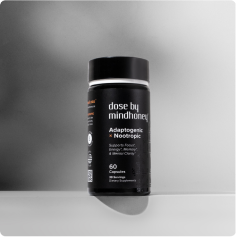ACTIVATING CREATIVITY: Creative Science (Part 1/3)
![Activating Creativity [1]](http://mindhoney.co/cdn/shop/articles/16_bfc967d2-e754-4ef9-b9f1-72f4bca5f054-232673_{width}x.png?v=1696982734)
Remember the time in your life when you felt most creative?
For many people this was in school.
When I was in high school and college, my creativity soared. I spent hours writing, creating, marketing, and performing various projects. I had an endless well of ideas and I was unafraid to try them out.
But when I started my career, my creativity tanked. I couldn’t find a minute of time or a drop of energy to work on creative projects after my work finished.
Maybe you felt this way too—maybe you still feel this way.
Guess what? There are research-backed reasons for all of this.
Creativity has long been seen as an art, not a science.
People are waiting for inspiration to strike, chasing their muses, and booking AirBnb’s in the woods—all in an attempt to find their creativity.
But all this time, activating creativity has been a science.
In this article, we’ll dive into the research-based methods to activate our creativity in order to excel in our careers and live more fulfilled lives.
Creative Science
There’s a part of our brains called the anterior cingulate cortex, or the ACC for short.
The ACC is the part of the brain that helps us think with insight.
When the ACC is activated, it’s really good at finding connections between seemingly disconnected ideas.
Steven Kolter (essentially the globe’s expert on flow state) says, “What fires up the ACC? The answer: A good mood. When we’re in a good mood, the ACC is more sensitive to odd thoughts and strange hunches. In other words, if an active ACC is the ready condition for insight, then a good mood is the ready condition for an active ACC. The opposite is also true: While a good mood increases creativity, a bad mood amplifies analytical thought. The brain limits our options to the tried and true — the logical, the obvious, the sure thing we know will work.”
Kolter goes on to explain how free time and solitude are essential pieces to let the ACC thrive. When we face deadlines and stress, our creativity gets crippled.
“Pressure forces the brain to focus on the details, activating the left hemisphere and blocking out that bigger picture. Worse, when pressed, we’re often stressed. We’re unhappy about the hurry, which sours our mood and further tightens our focus. Being time-strapped, then, can be kryptonite for creativity.” says Kolter.
Again, think back to the time in life when you felt most creative. Certainly not for everyone, but for many people their time in school was a low-stress environment.
Furthermore, the lack of freedom and mobility in school created a lot of solitude. These components came together to create the optimal environment for your ACC to flourish, resulting in heightened creativity.
Are you an overachiever?
Continue to next part: Activating Creativity (Part 2)



